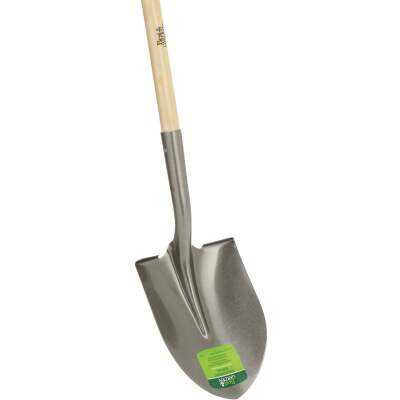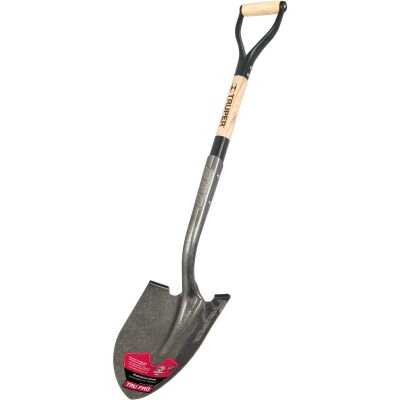
Having a water feature in your garden can provide a cool and relaxing spot to spend time — and also make a beautiful centerpiece to your backyard. Whether you are planning to install a pond or a fountain in your garden space, these are both simple DIY projects that will provide long-term enjoyment for years to come. Ponds and fountains come in many different kinds, all with their own set of instructions and specifications depending on what you want for your backyard. We are going to offer some general installation information for a basic pond and fountain feature in your garden.
Installing a Backyard Pond
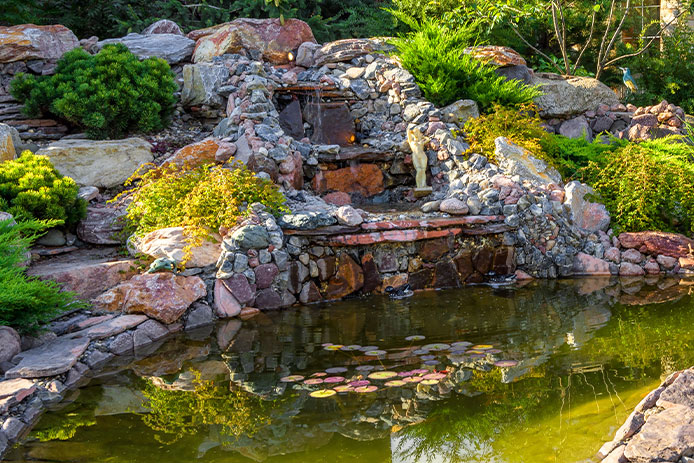
When installing a backyard pond, you can either use a preformed plastic liner or a flexible liner to make the desired pond the size and shape. Generally, larger ponds are easier to care for and clean, so it’s best to install a pond that’s reasonably large enough in relation to the size of your backyard. Ponds will require proper skimming, cleaning, filtration, and plants to keep the water clean. Also, plan to make your pond at least 2 feet deep. If you want to put fish in your pond, plan for even deeper areas. Here’s our step-by-step guide on how to install a garden pond:
1. Decide a location for the pond
Since you’ll need to dig, you should select an area free from underground utilities and heavy root systems, and is away from trees that could drop their leaves into the pond. Also, avoid areas that take heavy runoff.
2. Decide if you want to use a flexible or rigid preformed liner
Preformed liners are easier to work with, but they only come in preselected sizes and shapes.
3. Dig your pond

Using a shovel and any other digging tools, dig the hole in the appropriate depth, width, and shape. Remove any debris that may damage the liner.
4. Lay the liner

Place the flexible or preformed liner into the hole, extending it a little above ground level so the pond water doesn’t overflow into the ground.
5. Line the pond with flagstones or other material

You can use gravel, sand, stones, or other materials.
6. Fill the pond with water

Use a hose to fill the pond with water.
7. Install the filtration and pump system
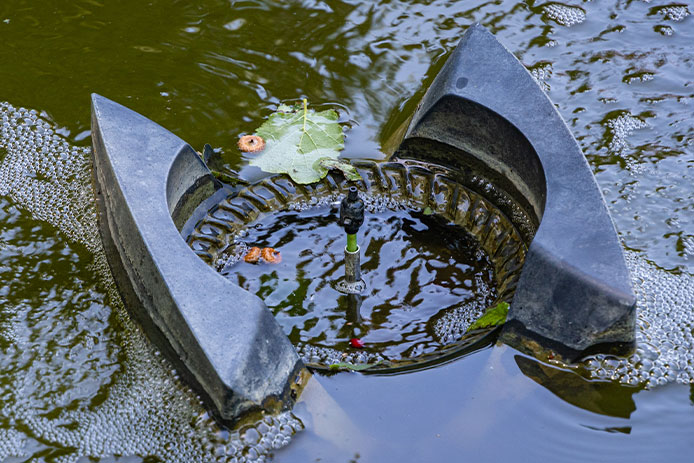
You need to keep the pond water moving and aerated. Otherwise, it will likely become a cesspool sooner rather than later. Especially if the pond has decorative plants, like pond lilies, or fish, the water quality needs to stay optimal. You will either want to install an aeration system, a waterfall feature (which would require a higher area of land gradation to create the waterfall effect), or a fountain feature in the middle of the pond that would properly aerate the water. Either way, you’ll need a pond pump. Choosing the right pump isn’t rocket science, but you want to be sure you get the right pump for the job. The right pond pump for your pond is going to mainly depend on the size of your pond. It is recommended that you circulate your pond’s water at least once every two hours. Begin by calculating the volume of your pond and then selecting a pond pump that will circulate it efficiently. Most pond pumps have a rating of gallons per hour (GPH) that is easy to calculate. For example, if you have a 1,000-gallon pond, you will want a pump with a rating of 500 GPH. Depending on your pond and landscaping, you can buy a submersible or external pond pump. While pond pumps do come with safety measures, it’s good to follow all instructions and warnings because mishandling of a pond pump can cause electric shock. After all, water and electricity don’t mix!
8. Install a fountain
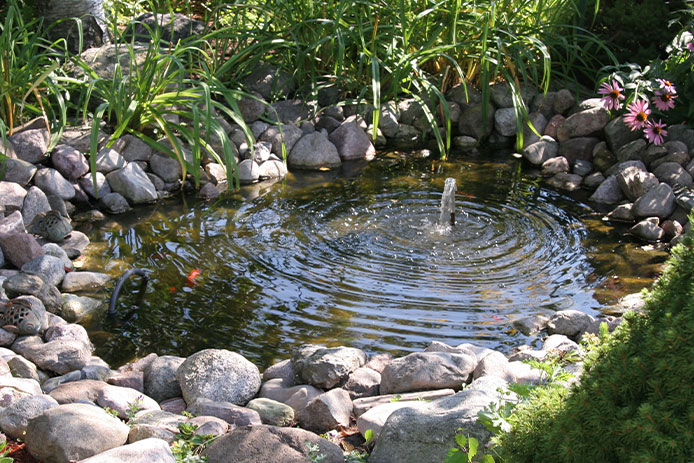
To install a fountain in the center of your pond, you can purchase a pond fountain kit that will come with specific installation instructions on how to install it into your pond. Generally, you will want to prepare a means to fix the fountain to the pond and have it hooked up with a filter box and water pump to effectively move the water. Below, we’ve outlined some basic pointers on what to consider and prepare when installing a fountain into your backyard pond.
How to Install a Fountain

Installing a fountain water feature in your backyard can be as simple or as complicated as you want to make it. Few things are as relaxing as listening to the quiet and steady gurgling of flowing water, so know that the end result will be totally worth the effort.
The easiest way to install a fountain is to purchase a ready-made fountain installation kit. While you may lose a little flexibility in the design or style, you will have the benefit of ease. The other way to go about this is to learn about the different components of a fountain and purchase them separately to construct and install your own garden fountain.
When deciding how to install your fountain, keep a few things in mind. First, choose a fountain design that works with the landscape and the space. Different fountains work well in different places. If you’re going to install a fountain into your pond, it should fit the size of the pond aesthetically and practically. Another thing to consider is the surrounding decor. Choose a fountain style that fits the decor and aesthetic of your garden. Lastly, and perhaps most importantly, a fountain needs a power source. Some outdoor fountains have solar panels, but otherwise, your fountain will need to be in reach of an electricity source. Because a fountain uses a filter box and a water pump to move the water, these two pieces of equipment need to be plugged into a power source. Once this is properly set up, your fountain feature will use the water in your pond to circulate the water so you don’t have to worry about connecting it to a water pipe.
Installing a backyard pond and fountain water feature can be simple or complex. Either way, it’s a great DIY project that will offer many years of return on serenity, beauty, and relaxation.
While do-it-yourself projects can be fun and fulfilling, there is always a potential for personal injury or property damage. We strongly suggest that any project beyond your abilities be left to licensed professionals such as electricians, plumbers, and carpenters. Any action you take upon the information on this website is strictly at your own risk, and we assume no responsibility or liability for the contents of this article.





